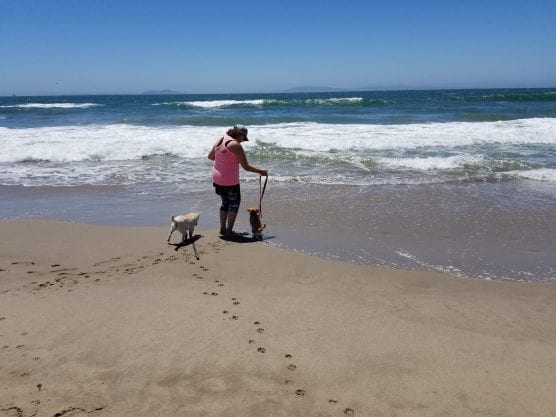The ocean off the coast of California is acidifying at twice the normal rate of Earth’s oceans according to a study published Monday morning.
The federal study, published in Nature Geoscience by scientists with the National Oceanic and Atmospheric Administration, or NOAA, used a novel technique to measure acidification – by studying the 100-year record of microscopic shells scattered on the ocean floor just off the coast of California near Santa Barbara.
“By measuring the thickness of the shells, we can provide a very accurate estimate of the ocean’s acidity level when the foraminifera were alive,” said lead author Emily Osborne.
Osborne developed this novel method of measuring changes in acidification of oceans by accentuating the relationship between the shells and the acid levels in the ocean.
At a basic level, the more acidic oceanic waters the more difficult it is for the organisms to form their shells, meaning scientists can use the varying thickness of the foraminifera shells as an indicator for acid levels.
This is so valuable precisely because Osborne and other researchers were able to gather and analyze fossils buried under layers of ocean sediment to develop a record. The value is particularly acute as acidification is a relatively new area of study, with earth scientists only gaining awareness of the problem in recent decades.

Ocean acidification correlates directly to carbon emissions on Earth, as the ocean absorbs much of the carbon dioxide emitted into the atmosphere. As much as 40% of the human-caused carbon dioxide emissions are absorbed into rivers, lakes and the Earth’s oceans.
But human causes only tell part of the story of why the acidification of the ocean off California is particularly intense. The other major factor, according to Osborne, is the Pacific Decadal Oscillation, a natural process in California’s coastal waters that produces cooling and warming cycles.
Fluctuations in the foraminifera shell thickness indicate the natural process at work, but also must be properly understood if coastal managers are going to properly handle the acidification problem.
“During the cool phases of the Pacific Decadal Oscillation, strengthened winds across the ocean drive carbon dioxide-rich waters upward toward the surface along the West Coast of the U.S.,” Osborne said. “It’s like a double whammy, increasing ocean acidification in this region of the world.”
The ramifications of acidification in the coastal waters of California extend beyond the purely ecological, as California maintains one of the most productive fisheries – with salmon, crab and shellfish – in the nation and the world.
— By Matthew Renda
This is a developing story.
Like this:
Like Loading...
Related





 Tweet This
Tweet This Facebook
Facebook Digg This
Digg This Bookmark
Bookmark Stumble
Stumble RSS
RSS



























REAL NAMES ONLY: All posters must use their real individual or business name. This applies equally to Twitter account holders who use a nickname.
0 Comments
You can be the first one to leave a comment.